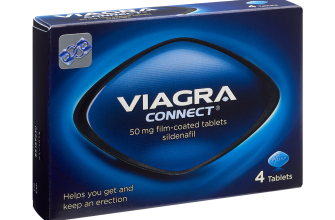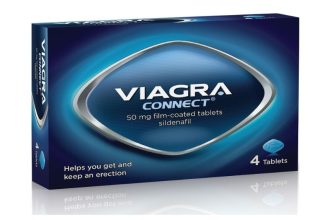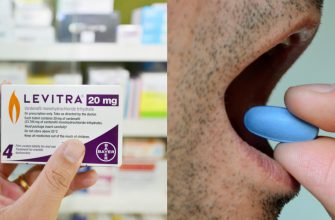Need a concise, impactful analysis of Viagra’s potential use of a Black spokeswoman? Focus on the demographic reach and brand image shifts such a choice could generate. This strategy could significantly broaden the drug’s appeal beyond its traditional, predominantly older white male audience.
Consider the powerful message conveyed: inclusivity. A Black spokeswoman immediately positions Viagra as relevant to a wider spectrum of people experiencing erectile dysfunction. This directly challenges long-held stereotypes and promotes a more diverse representation of health concerns.
However, careful consideration of target messaging is vital. Avoid generic approaches; instead, craft targeted campaigns highlighting the unique experiences and healthcare needs within the Black community. This includes addressing cultural sensitivities and potentially partnering with Black health organizations for increased credibility and reach.
Successful implementation requires a commitment to authenticity and meaningful engagement. This goes beyond simply featuring a Black woman; it demands genuine investment in understanding the community’s perspective and building trust. A poorly executed campaign could backfire, leading to negative publicity. Thorough market research and community consultation are therefore non-negotiable.
Success hinges on a thoughtful, targeted approach that acknowledges and respects cultural nuances. A well-executed strategy could reshape Viagra’s brand image, fostering stronger connections with a larger, more diverse customer base.
- Viagra Black Spokeswoman: A Detailed Look
- Challenges and Opportunities
- Recommendations for Future Campaigns
- The Marketing Strategy Behind the Choice
- Reaching a Diverse Consumer Base
- Beyond Representation: A Deeper Look
- Representation and Impact on the Black Community
- Comparison to Previous Viagra Campaigns
- The Broader Implications for Pharmaceutical Advertising
- Building Trust Through Authentic Representation
- Measuring Impact and Accountability
- Beyond Representation: Addressing Healthcare Disparities
- Strategic Partnerships for Success
Viagra Black Spokeswoman: A Detailed Look
Currently, Pfizer, the manufacturer of Viagra, does not feature a Black spokeswoman in their primary advertising campaigns. This lack of representation is a significant point of discussion within the advertising and marketing communities. However, various independent initiatives and social media campaigns have showcased Black women discussing sexual health and well-being, often including Viagra or similar medications in their discussions. These efforts aim to promote inclusivity and address health disparities within the Black community.
Challenges and Opportunities
The absence of a prominent Black spokeswoman for Viagra presents both challenges and opportunities. Challenges include addressing historical biases within pharmaceutical marketing and fostering trust within underserved communities. Opportunities include developing more inclusive campaigns that resonate with diverse audiences and creating impactful partnerships with relevant influencers and organizations. Successful strategies need targeted messaging, community engagement, and authentic storytelling.
Recommendations for Future Campaigns
Future campaigns should prioritize authentic representation and genuine engagement with the Black community. This involves working closely with Black healthcare professionals and community leaders to craft culturally sensitive messaging. Using diverse imagery and casting across campaigns will also reflect a broadened view of Viagra’s user base. Data-driven insights should inform messaging and media choices, ensuring impactful reach within the target demographics.
The Marketing Strategy Behind the Choice
Selecting a Black spokeswoman for Viagra’s marketing campaign represents a calculated move towards broader audience engagement. This decision likely stemmed from market research indicating significant untapped potential within the African American community. Data suggests a higher prevalence of erectile dysfunction among Black men, yet marketing efforts historically haven’t adequately addressed their needs.
Reaching a Diverse Consumer Base
The strategy aims to build trust and resonate with a demographic previously underserved. A relatable figure, familiar and respected within the community, can enhance campaign credibility. This approach aims to counter perceptions of inaccessibility and fosters a sense of inclusion crucial for marketing success. This tactic likely incorporates social media campaigns and targeted advertising aimed at specific demographics within the broader African American population, leveraging influencer marketing and community partnerships for maximum effect. The goal: drive increased product awareness and sales among a largely underserved market segment.
Beyond Representation: A Deeper Look
Beyond simple representation, the selection speaks to a broader shift in advertising. Brands are increasingly recognizing the value of diverse and authentic representation. Choosing a Black spokeswoman allows Viagra to present a more inclusive brand image, appealing to a wider range of consumers who value diversity and inclusivity in the brands they support. This reflects a larger trend of companies prioritizing a multi-faceted approach to marketing to ensure that their message reaches all potential customer segments.
Representation and Impact on the Black Community
A Black spokeswoman for Viagra needs to authentically reflect the diverse experiences within the Black community regarding sexual health. Avoid stereotypical portrayals; instead, show a range of ages, body types, and relationship statuses. This inclusive representation combats harmful myths and promotes open dialogue.
- Showcase diverse narratives: Feature women discussing their experiences with erectile dysfunction in their partners, highlighting different perspectives and challenges faced by Black couples.
- Partner with Black health organizations: Collaborate with reputable organizations to ensure accuracy and sensitivity in messaging about sexual health within the Black community. This includes proper medical information and culturally relevant communication.
- Address health disparities: Acknowledge and address the unique health disparities affecting Black women and men, including higher rates of certain conditions affecting sexual health. This requires careful research and consultation with experts.
Positive representation can significantly improve health outcomes by:
- Reducing stigma: Openly discussing sexual health challenges normalizes seeking help and reduces the shame associated with these issues.
- Increasing awareness: A relatable spokesperson can increase awareness of available treatments and resources, leading to better health outcomes.
- Promoting early intervention: Addressing health concerns early leads to better management and improved quality of life.
The campaign should actively avoid perpetuating harmful stereotypes or creating unrealistic expectations. The focus should be on accurate information, inclusive representation, and empowering Black individuals to prioritize their sexual health.
Comparison to Previous Viagra Campaigns
Viagra’s previous campaigns largely featured older, predominantly white men. This new approach with a Black spokeswoman represents a significant departure from that established visual identity. The shift likely aims to broaden the brand’s appeal to a wider demographic and better reflect the diverse population who might benefit from the medication.
Data suggests that previous marketing focused heavily on television advertising, emphasizing erectile dysfunction as the primary concern. This new campaign, with its diverse spokesperson, might utilize more targeted digital strategies, possibly encompassing social media engagement and collaborations with health influencers to reach specific audience segments.
A key difference lies in the messaging. Past campaigns often centered around performance anxiety and restoring virility. This new campaign might focus on improved quality of life and overall well-being, potentially linking Viagra use to stronger relationships and increased confidence.
The choice of a Black spokeswoman is a bold strategy with measurable impact. It could foster greater trust and relatability within a historically underrepresented group, potentially leading to increased market share and brand loyalty in this segment.
Successfully transitioning from previous advertising approaches will depend on consistent messaging across all platforms. The company needs to carefully monitor social media engagement and analyze feedback to ensure the campaign resonates positively with its target audience.
The Broader Implications for Pharmaceutical Advertising
The recent controversy surrounding Viagra’s potential use of a Black spokeswoman highlights a critical need for pharmaceutical companies to diversify their marketing strategies. Studies show that diverse representation in advertising leads to increased trust and engagement among minority groups. Failing to reflect the diversity of the consumer base can damage brand reputation and limit market reach. Companies should prioritize inclusive campaigns, featuring diverse models and storylines that resonate authentically with varied demographics.
Building Trust Through Authentic Representation
Authenticity is paramount. Forced diversity feels disingenuous. Pharmaceutical companies must ensure that their chosen representatives genuinely reflect the brand’s values and the experiences of the target audience. This means investing in research to understand diverse communities’ healthcare needs and communication styles. Consider employing diverse creative teams–those with lived experience–to guide the advertising’s tone and message. This will lead to more impactful, credible messaging that resonates naturally.
Measuring Impact and Accountability
Pharmaceutical advertising should be subjected to rigorous scrutiny. Companies should track key metrics, including brand perception among diverse groups and sales figures within different demographic segments, to gauge campaign effectiveness. Independent audits can help ensure accountability and identify areas for improvement. Transparency in these processes is crucial to build and maintain trust with consumers.
Beyond Representation: Addressing Healthcare Disparities
Meaningful change goes beyond simple representation. Pharmaceutical companies must actively address healthcare disparities faced by minority groups. This includes supporting community health initiatives, promoting equitable access to healthcare, and investing in research that addresses the unique health needs of diverse populations. Advertising campaigns should reflect this commitment to social responsibility.
Strategic Partnerships for Success
Collaboration with community leaders and healthcare providers is vital. These partnerships enable companies to gain valuable insights and ensure that marketing campaigns resonate meaningfully within specific cultural contexts. This collaborative approach fosters trust and strengthens community engagement.










